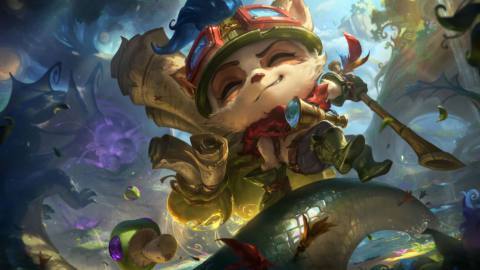
League of Legends is 15 years old, and Riot Games is gearing up to celebrate the momentous occasion. Season 2 of Arcane, the popular and acclaimed Netflix show, will be released in November. The annual esports tournament known as the World Championship is approaching soon, accompanied by a rock anthem by Linkin Park. And Teemo, the game’s de facto mascot and most fondly hated champion, is getting a visual update.
In a dev diary update posted on Monday, Riot shared some upcoming plans for the game, including new narrative seasons. Each themed season will be accompanied by a matching champion. It’s another big step in League of Legends’ history, and it’s an attempt to meet the needs of a huge, fractured fan base: competitive players, lore fanatics, and everyone in between.
“We don’t think of seasons as just advancing a story in the canon; we see it as a tool to explore vibes and narrative tie-ins to other things that are going on at Riot — ways for you to get deeply immersed in a part of the world you love, or an alternate universe that we can really bring more to life,” says Pu Liu, game director on League of Legends, in a call with Polygon.
It’s an effort that builds off of previous ones, like the in-client visual novels, or events like the Sentinels of Light story. Riot has a long history of figuring things out through trial and error.
“When we first launched the game, we had no idea that it would reach the scale that it did for the first few years,” says Paul Bellezza, executive producer on League of Legends, in the same call with Polygon. The first challenge was stability; the second was maintaining the update schedule. “We had the ambition of two-week patches, which was not normal for a lot of PC games at the time. And so, how do we keep that cadence up with a lot of tools that we’re building as we’re learning? And so I think I’d say a lot of the early days were very much just, you know, flying the plane while building it at the same time, at lightning speed.”
You can only find a few pieces of the original League of Legends. Like with the Ship of Theseus, each individual element of the game has been updated, reworked, and rebuilt over the years. Riot has also expanded League into not just new game modes but also new games and mediums: Legends of Runeterra, Wild Rift, the (sadly discontinued) Riot Forge game publishing label, Arcane, and musical groups like K/DA and Heartsteel. The evolution of League means that not only has it continued to attract fans, but they come to the game for different reasons.
In 2014, the classic Summoner’s Rift map where most games take place was updated. Riot has since continued to upgrade the visual fidelity of the game and revisit the engine to keep making new champions, which have increased in complexity and depth over time. Now, the game has collected 168 champions — a dizzying array of backstories and ability combinations to recognize. Is there a point where Riot might eventually declare there are too many champions?
“The truth is, we’ve had that conversation many times,” says Liu. “The duality of it is, every time we add a champion, it adds complexity. If you stop playing League for a few years and come back, you’re like, Who is this K’Sante guy? What do I do? It’s very, very challenging to balance that continuous burden of knowledge perspective.”
“That being said, for players who are actively engaged in League of Legends, they still really look forward to champion releases,” Liu adds. “A lot of them want to find out if this is their new main, or they get really excited about a new cute baby dragon. The requirement for us is that a champion cannot make the game worse for the non-players of that champion to such a degree that it does not justify the value it creates for the players who do play that champion.”
League of Legends isn’t just the main game anymore; there are extra game modes like Swarm and Teamfight Tactics, multimedia properties like books and shows, an in-development MMO, and alternate universes. It’s fascinating to think about what League of Legends might look like in another 15 years. Every experiment over the years, even the ones that have long since been patched out, have led to the game we have today. It’ll be interesting to see how Riot continues to curate that experience in the coming years.
